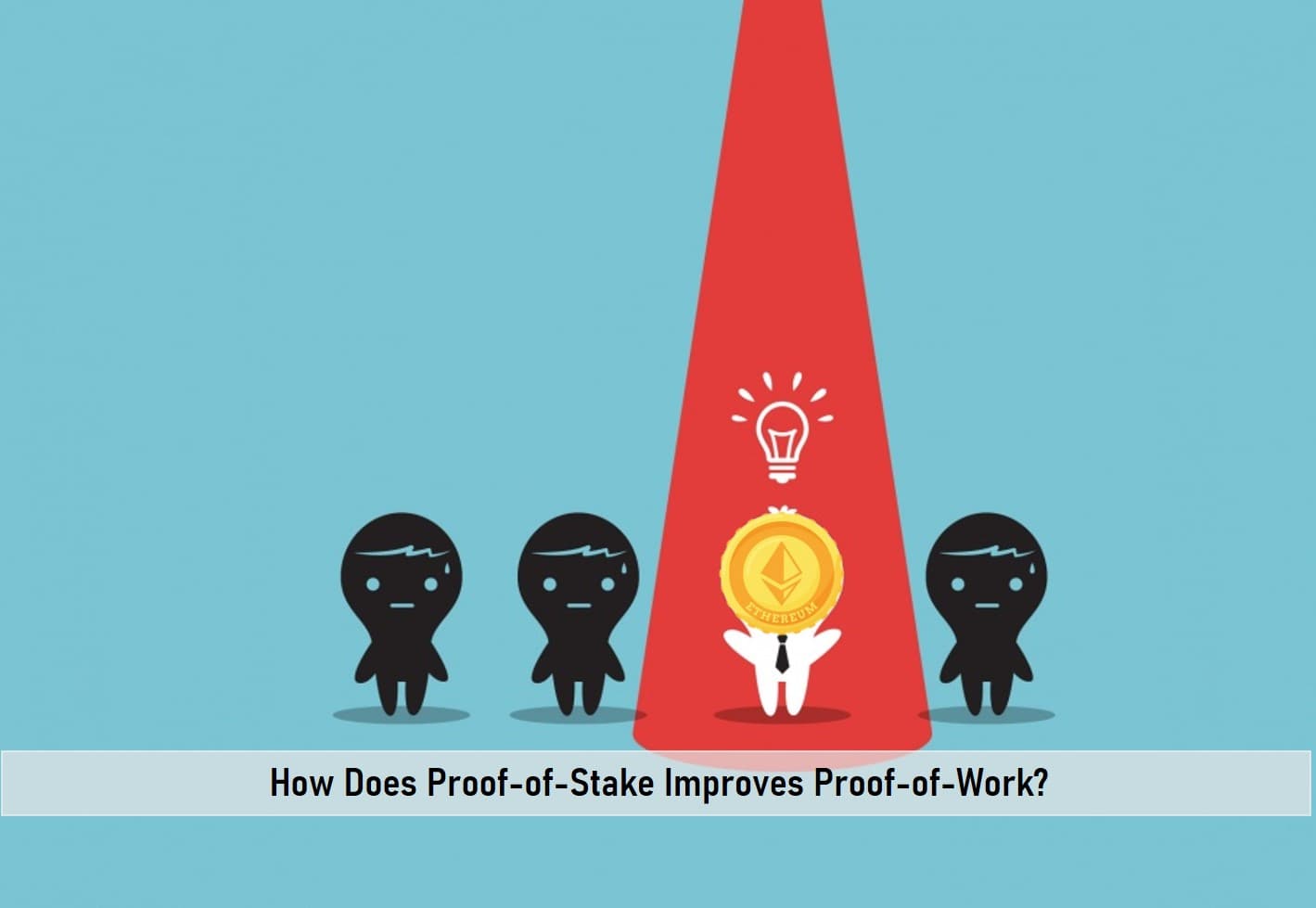
It is no more news that the Ethereum network is on the verge of introducing its version 2.0.
However, the intriguing part is that it would be operating on the mechanism of proof of stake consensus instead of proof of work. This twist has sparked mixed reactions among investors mainly miners.
It’s however anticipated that this move would bring a massive improvement to the Ethereum network.
As we delve into the subject, let’s first understand the concept of proof of stake and proof of work before analyzing their relationship.

What is Proof-of-Work (PoW)?
Proof of Work (PoW) is a cryptographic mode of presenting proof to others that a certain complex mathematical computation has been successfully executed by a miner for a reward.
The objective is to prevent denial of service attacks and to protect the integrity of the blockchain network with minimal efforts required to confirm or validate transactions.
Proof of Work (PoW) and its Mechanism
The proof of work consensus was Satoshi Nakamoto’s idea, it is now a standard reward system for all crypto miners.
Initially, It was majorly used in implementing Bitcoin and Ethereum transactions which were widely known as the original consensus mechanism for blockchain.
Proof of Work was considered to be a foolproof way of preventing duplication of payment rewards and achieving sanity in the blockchain.
This approach eliminated regulation as it made the concept of decentralization possible by bypassing the need for middlemen while making sure trades were validated.
It requires miners to verify a trade by figuring out a cryptographic problem using computational power.
The competition is intense, miners compete with the aid of more sophisticated machines with hashing power rated in gigahertz per second (GH/s).
Currently, it takes Bitcoin about 10 minutes to mine a new block from each trade. Ethereum on the other hand spends 16 seconds to mine or validate a transaction. This is so because of some alteration made in the PoW protocols of Ethereum.
What is Proof-of-Stake (PoS)?
Proof of Stake is a consensus mechanism requiring users to stake their Ethereum to become validators of the network. The purpose of this is to achieve a distributed consensus.
Proof of Stake (PoS) and its Mechanism.
Plagued by the immense computational power needed to operate proof of work procedures, the blockchain network set out to create a new dimension of creating consensus which should be more beneficial.
This led to the formation of the proof of stake protocols in 2012 by Sunny King and Scott Nadal.
The proof of stake, unlike PoW, makes use of the currency power instead of the computational power.
The number of tokens in your wallet would determine how much you can stake. Your stakes would in turn determine your ability as a user to verify or confirm a trade in the network.
SEE ALSO: What is Proof of Capacity – All you need to know
SEE ALSO: 5 Best Ethereum Wallets for Safe trading and Storage
This protocol makes use of forgers instead of miners. This is because there would be no mining of a new coin.
Instead, at the point of initiating a network, forgers would provide a static number of coins that cannot be changed. Forgers are paid with trade fees instead of a blockchain.
Unlike the proof of work, there is no form of competition in the proof of stake protocol. Validators are picked depending on how much stake they have in the network.
Most blockchains that operate on Proof of Stake set a particular number of coins as the minimum stake, which amounts to a huge paydown investment.
For instance, to verify trades for the network of Dash, you would need to freeze and stake at least 1000 Dash coins.
However, after staking the least required amount, your opportunity of earning a transaction fee is directly proportional to the number of coins you possess in percentage terms.
For example, if a certain cryptocurrency has about 2000 coins in circulation. If you bought and staked 200 coins, it means you have a 10% chance of winning the reward.
How Does Proof of Stake Improve Proof of Work?
Of the two consensus mechanisms, proof of stake is often seen as the more improved mechanism with the following reasons:
Centralization of Resources
Proof of Work (PoW) protocol requires the efforts of powerful computational machines.
This results in a mining pool whereby a group of investors or miners pool their resources together to purchase powerful hardware to improve their chances of winning a very significant reward.
Consequently, only a few investors can participate in the mining process resulting in centralization.
For instance, there are only four mining groups in the globe with China dominating the cryptocurrency mining business.
Even though Proof of Stake (PoS) allows the pooling of resources, it, however, gives all individuals an equal opportunity to win a reward depending on their staking ability.
SEE ALSO: 3 Key Things to Look out for When Buying a Hardware Wallet
SEE ALSO: 5 Best Bitcoin Wallet Providers in 2021
Power Requirements for Mining Bitcoin
With mining machines running into millions across the globe, it will still take an average of 10 minutes to mine 1 Bitcoin (BTC) and about 72,000 Gigawatts (GW) of power with a standard ASIC Miner.
Powerful CPUs or GPUs are needed to mine Bitcoin and Ethereum. GPU is preferred with system configurations readily available on ASIC Miners.
Analysts have also revealed that demands for power in 160 countries are lesser than the electricity requirement needed to keep the bitcoin network running.
Power Requirements for Mining Ethereum
It takes about 7.5 days at an average hashing power of 500MH/s to mine 1 Ethereum. But this all depends on the hashing rate of your miner which you can reduce the mining time by increasing the hashing rate of your miner.
You can estimate the mining cost of Ethereum with this Ethereum Mining Calculator.
Proof of stake on the other hand requires a minimal amount of electricity. As it does not need to solve any complex algorithms. This gives Proof of Stake a hedge over Proof of Work.
SEE ALSO: How to Mine Ethereum and Earn Better than Bitcoin
SEE ALSO: 4 Cryptocurrency Mining Methods and Mining Calculator
The 51% Attack – Proof of Stake Consensus
When a few individuals dominate more than 51% of the mining power. Such concentration situations give room for blocks to be altered for personal gains. This can occur in Proof of Work.
However, this phenomenon is impossible in a Proof of Stake consensus. No investor would scheme up an attack dominate over 51%.
If an attempt is made on purchasing 51% of the total token in circulation, the price per coin would rise significantly, the buyer would need to expend more than their gains. And also, once this act is uncovered, the buyer could lose all their stakes.
SEE ALSO: 14 KEY Tips You Should Know Before Mining Bitcoin
SEE ALSO: 5 Best Bitcoin Mining Hardware with Low Running Overheads.
Final Thoughts
The Ethereum network could have a promising future with Proof of Stake (PoS), however, PoS has its setbacks, one of which is double-spending.
The question is, would Ethereum version 2.0 thrive under the PoS consensus mechanism more than PoW?
All we can do now is speculate as we await the whole event to unfold.
Image credit: Business vector created by fullvector – www.freepik.com
Read More




